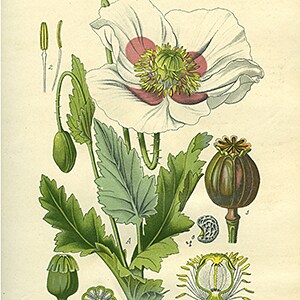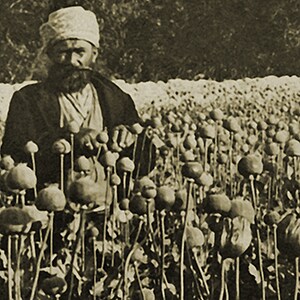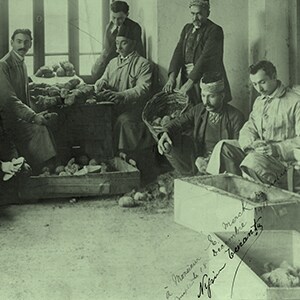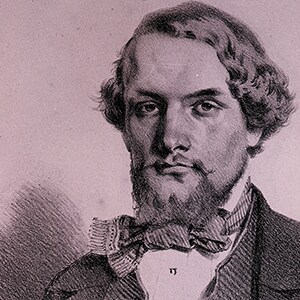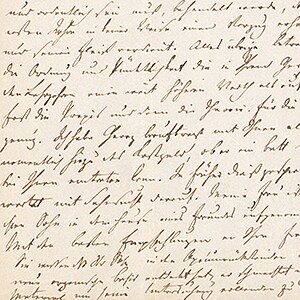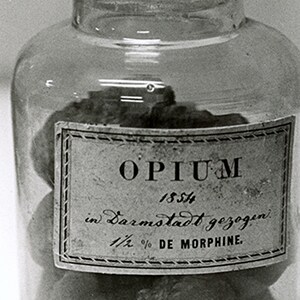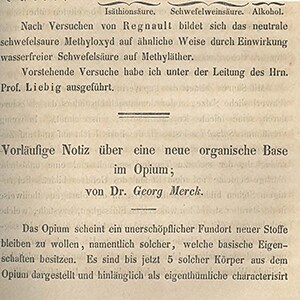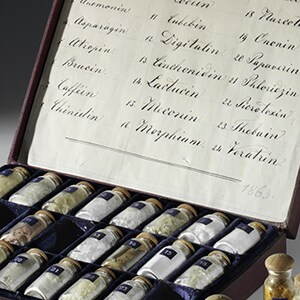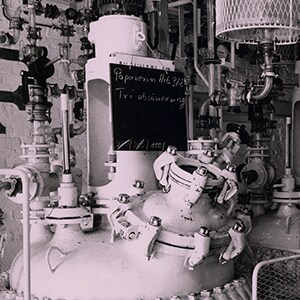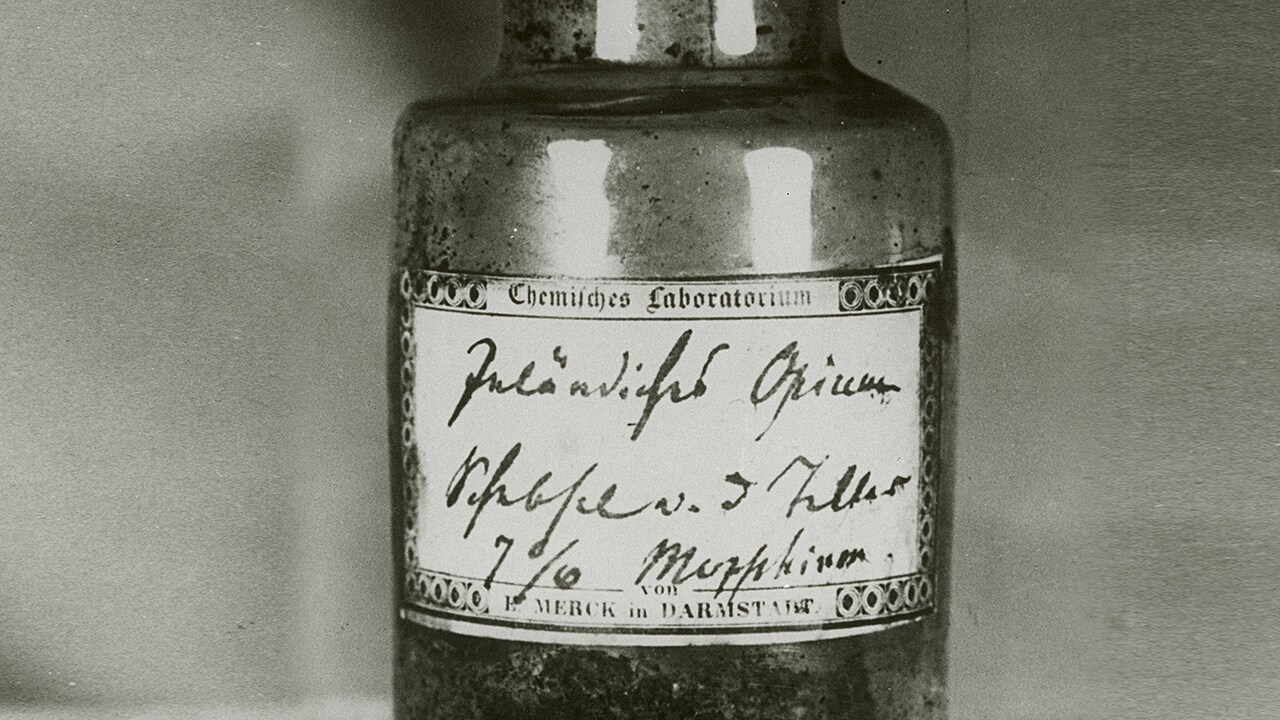
»To save you waiting any longer, I have mailed you a new batch of crushed opium resin…«
Emanuel Merck to his son Georg, 1848
For Emanuel Merck, who is so consistent and successful in his efforts to clarify all matters relating to opium and its composition, it must be particularly gratifying to see his son Georg, a doctoral student of Justus Liebig, discover papaverine, a new alkaloid of opium, in 1848.
The inspiration to work on certain resin-like residues of opium processing doubtlessly comes from Georg’s father, who always has large quantities of the material at his disposal, and considers closer investigation to be a suitable means of furthering his son’s chemical education. Therefore, Emanuel Merck sends a sack of opium resin to Giessen, where Georg is working in Liebig’s laboratory. Georg promptly proves his skills.
In a letter to his friend Emanuel Merck in Darmstadt dated March 12, 1848, Liebig writes: »As you know, your son has discovered a new organic base in the opium residues. He is pining for material with which he can complete his studies.«
Emanuel can hardly believe the news at first and proceeds to conduct his own experiments to check his son’s results. Barely ten days later, he writes back to Giessen: »I am hastening to notify you that I have succeeded in preparing your new substance. […] I have established to my satisfaction that it is neither paramorphine nor narcotine and is starting to interest me greatly.«
Georg Merck is the first person to have succeeded in preparing this hitherto unknown alkaloid in an almost entirely pure state. The substance he calls papaverine becomes the seventh known alkaloid of opium. A paper entitled »Preliminary notice of a new organic base in opium« in which Georg first reports his research is published the same year, followed the very next year by a final report in the journal »Annalen der Chemie und Pharmazie« published by Justus Liebig and one of the leading journals of its time.
However, papaverine is a substance whose peculiar pharmacological mechanism of action and therapeutic value are not established or used in medicine until decades after its discovery. Its antispasmodic effect on smooth muscles is not recognized for another 50 years.
Papaverine accounts for about one percent of raw opium but does not have the side effects of opium. It is soon used as an antispasmodic to control gastrointestinal, biliary and urinary tract spasms and to prevent vasospasm in cardiovascular surgery.
Papaverine is a naturally occurring compound, isolated from the dried milk of opium poppy. This opium derivative is known for its antispasmodic effect on smooth muscle. Following the harvest of opium poppy (Papaver somniferum) cultivated in Asia, it is processed locally before being shipped to Europe.
The alkaloid is discovered by Georg Merck in 1848. In a letter to Emanuel Merck, Justus Liebig, at whose laboratory in Giessen Emanuel Merck’s son Georg works, reports on the discovery. The substance is the seventh known opium alkaloid.
In the journal »Annalen der Chemie und Pharmacie«, Georg Merck shares his discovery with the scientific community: »I have succeeded […] in identifying a new alkaloid, which has nothing in common with the known opium derivatives and which I therefore feel justified in giving the name papaverine.«

